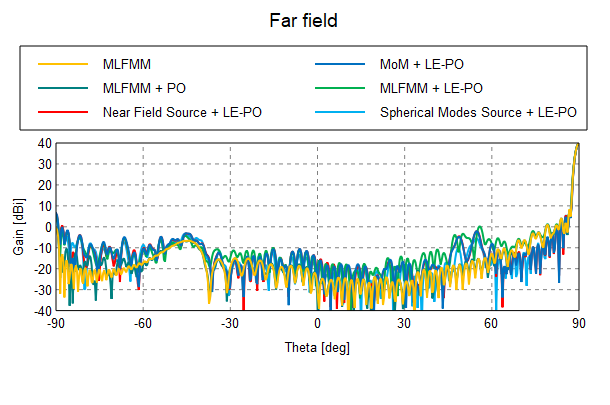Comparing the Results
Compare the resource requirements and far field gain patterns for the models using different solver techniques.
-
Compare the resource requirements for the different techniques.
Table 1. Comparison of resources using different techniques. Generating the equivalent source data required negligible resources. Model RAM [MB] Total Time [s] MLFMM (reference) 4210 753 MLFMM Horn + PO Reflector 700 3663 MLFMM Horn + LE-PO Reflector 259 100 MoM Horn + LE-PO Reflector 540 161 Near field source + LE-PO Reflector 32 9 Spherical modes source + LE-PO Reflector 21 3 Note:- Use LE-PO as the solution method for the reflector to reduce the memory requirement and solution time by several orders of magnitude.
- Subdivide the model into equivalent source models to reduce the resource requirements.
-
Compare the far field gain patterns for the models.
Figure 1. Gain of the reflector antenna calculated using different techniques over a 180 degree angle. 
Figure 2. Gain of the reflector antenna calculated using different techniques - main lobe. 
The difference in results is due to coupling between the horn and reflector that is only taken into account for the MLFMM solution. Although there is no restriction on the size of LE-PO triangles, the geometry must be accurately meshed.
For example, had a flat plate been used, only two triangles would have been required to obtain the same results.